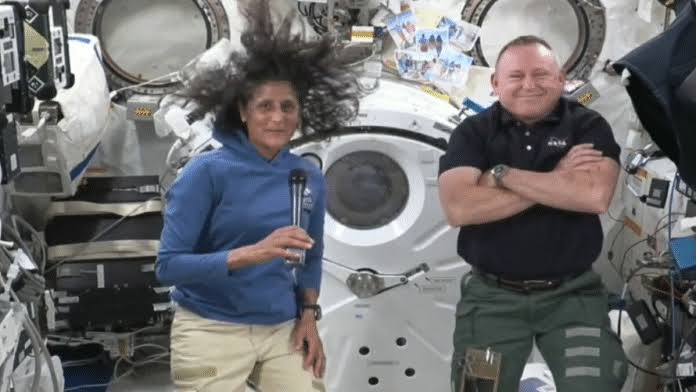NASA astronauts Barry “Butch” Wilmore and Sunita Williams are facing a daunting, life-altering situation as their stay aboard the International Space Station (ISS) is extended far beyond the originally planned mission. Initially set for a brief visit, the astronauts may now remain in space until 2025 due to a technical malfunction in Boeing’s Starliner spacecraft, creating significant health risks as their mission length stretches from days to years.
The Unexpected Extension: A Result of Boeing Starliner Malfunction
Wilmore and Williams were transported to the ISS in June by Boeing’s Starliner for what was intended to be a short-term mission. However, a critical technical glitch in the spacecraft has left them stranded, with no clear timeline for their return. Experts now predict the astronauts may not return to Earth until 2025, exposing them to prolonged dangers associated with extended space missions.
Life-Altering Health Risks in Space
The extended stay on the ISS puts the astronauts at significant risk of severe health issues. Studies have shown that prolonged exposure to the conditions of space can lead to a range of dangerous effects, including:
- Bone Density Loss: Astronauts experience accelerated bone density loss at a rate 12 times faster than severe osteoporosis on Earth. This can lead to an increased risk of fractures, which are particularly concerning in the zero-gravity environment of space.
- Muscle Atrophy: Extended time in space can result in the loss of up to 50% of muscle mass, altering the shape and function of the heart and other vital organs.
- Vision Problems: Long-term exposure to space can cause significant changes in vision, potentially leading to permanent damage.
- Radiation Exposure: Astronauts on the ISS are exposed to a year’s worth of radiation every single day, dramatically increasing their risk of developing cancer later in life.
- Cardiovascular and Cognitive Issues: The prolonged spaceflight environment can lead to serious cardiovascular issues, loss of cognitive function, and the formation of kidney stones, all of which are exacerbated by the lack of gravity.
Rachael Seidler, a professor of Applied Physiology and Kinesiology at the University of Florida, highlighted the severity of these risks, explaining, “The longer you’re [in space], the bigger the change.” This dose-dependent nature of the physiological changes means that the longer the astronauts remain in space, the greater the impact on their bodies.
Urgent Need for a Safe Return
As their stay on the ISS continues, the urgency to bring Wilmore and Williams back to Earth grows. The accumulation of these health risks makes it critical for the astronauts to return as soon as possible to mitigate the long-term effects on their bodies and overall health.
Kyle Zagrodzky, founder and CEO of Bone Health Clinic, emphasized the gravity of the situation: “Hip fractures pose a grave concern, as they can strip away independence and increase mortality risk.” The potential for such severe, life-altering injuries underscores the need for a swift resolution to the technical issues with the Boeing Starliner.
Conclusion: The Importance of Timely Rescue
The extended mission of NASA astronauts Wilmore and Williams on the ISS has turned into an unplanned experiment in the dangers of long-term spaceflight. As experts continue to warn of the life-altering risks they face, the race is on to find a solution and bring them safely back to Earth. This incident highlights the critical need for reliable spacecraft and timely missions, ensuring that the health and safety of astronauts remain a top priority in space exploration.
By understanding and addressing these risks, NASA and other space agencies can better prepare for future missions, safeguarding the well-being of those who venture beyond our planet.



